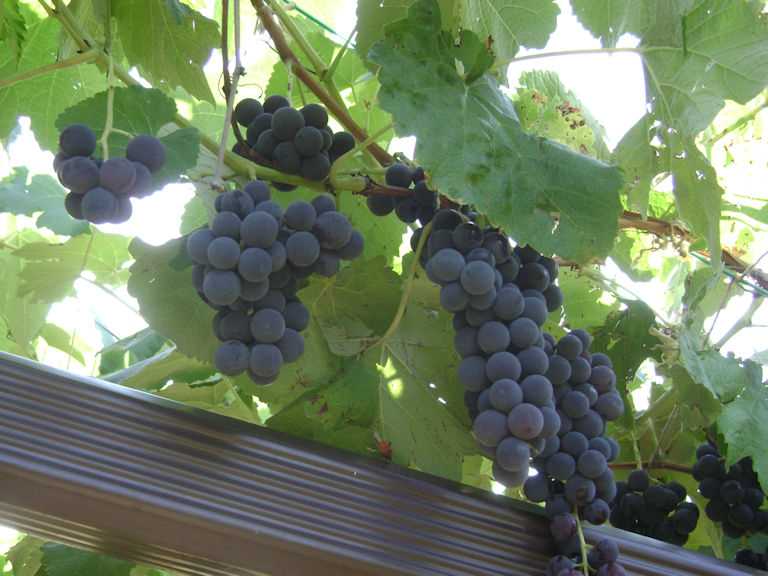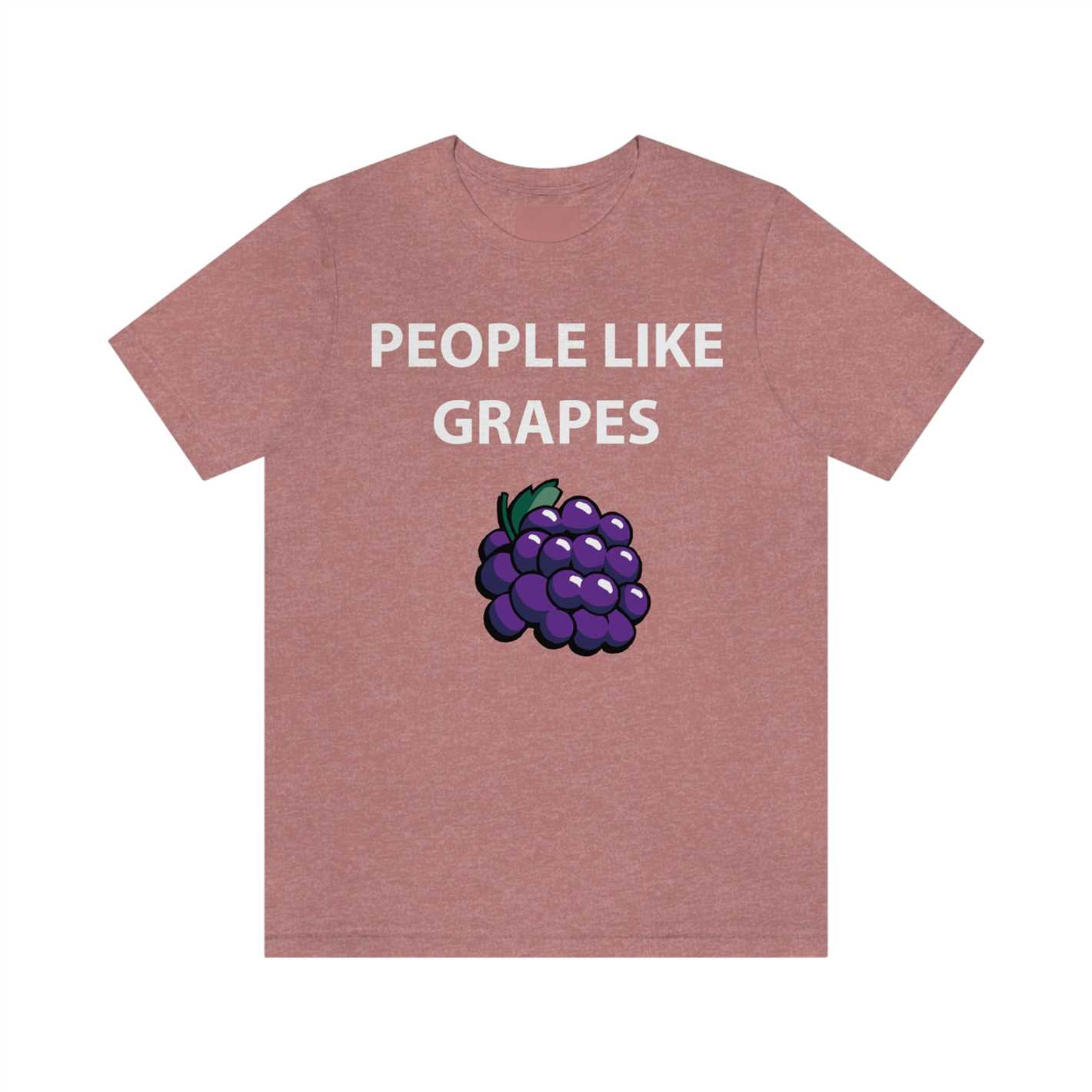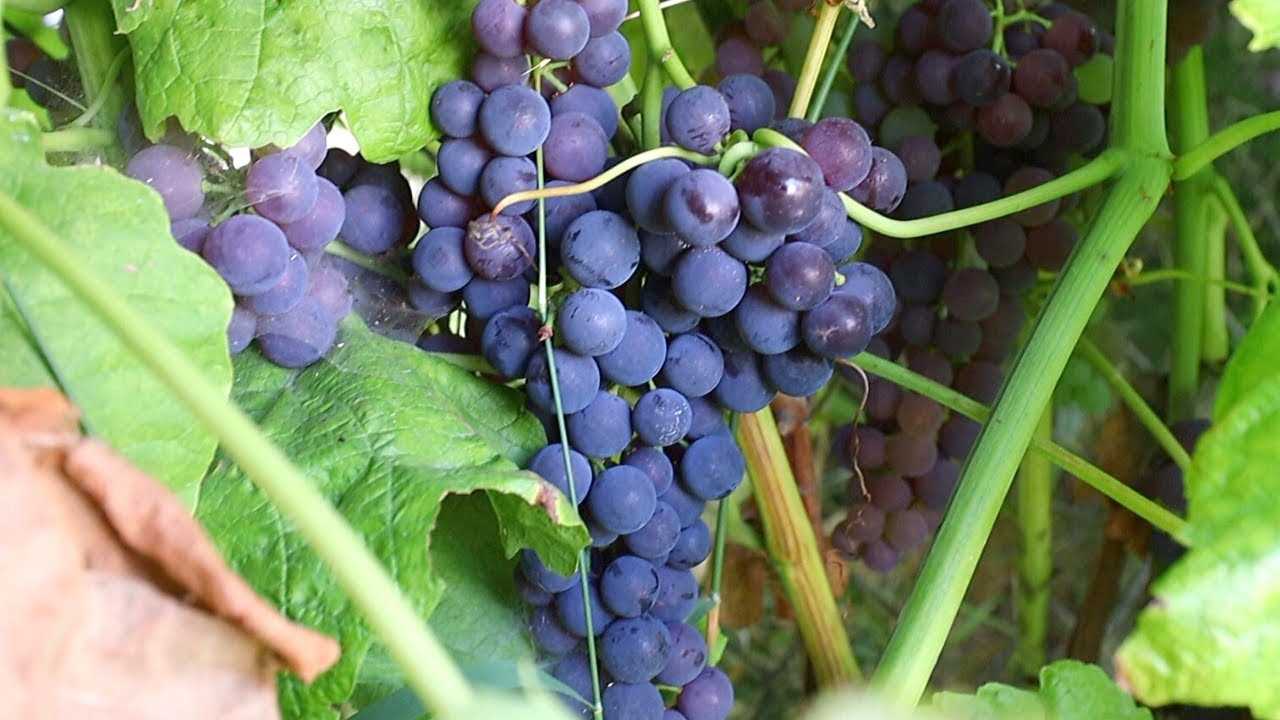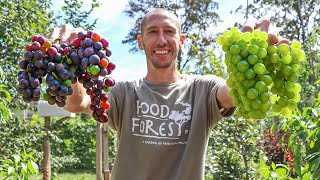- Grapes: Shaping New Sleeves
- Why Shape New Sleeves?
- Techniques for Shaping New Sleeves
- Conclusion
- Understanding the Grape Industry
- Grape Cultivation
- Harvesting and Processing
- Market Trends and Challenges
- The Role of New Sleeves in Grape Production
- What are New Sleeves?
- Benefits of Using New Sleeves
- Types of New Sleeves
- In conclusion,
- Advantages of Using New Sleeves
- Choosing the Right Type of New Sleeves
- 1. Climate Considerations
- 2. Pest and Disease Resistance
- 3. Size and Fit
- 4. Durability and Reusability
- 5. Cost
- Impact on Grape Quality and Shelf Life
- Improved Physical Protection
- Enhanced Airflow
- Reduced UV Exposure
- Extended Shelf Life
- Key Considerations for Grape Growers
- 1. Climate and Soil
- 2. Grape Varieties
- 3. Disease and Pest Management
- 4. Training and Pruning
- 5. Harvesting and Storage
- 6. Marketing and Sales
- 7. Compliance with Regulations
- Future Trends in Grape Sleeve Technology
- 1. Biodegradable Materials
- 2. Advanced Printing Techniques
- 3. Smart Packaging
- 4. Customization Options
- 5. Sustainable Sourcing
- Question-answer:
- What are some popular varieties of grapes?
- How can I tell if grapes are ripe?
- Can grapes help with weight loss?
- Are grapes good for my heart?
- How should I store grapes?
- What are some ways to enjoy grapes?
- Are grapes a good source of vitamins?
- Video: Turn a Few Grape Vines Into An Entire Vineyard In a Couple Weeks With Green Cuttings
Grapes are more than just a tasty snack or a beautiful addition to a cheese plate. They are a versatile fruit that can be used in a variety of ways, from making wine to being the star ingredient in a salad. But did you know that the shape of a grape can actually tell you a lot about its flavor and texture?
When it comes to grape shape, there are two main types: elongated and round. Elongated grapes, such as the popular Thompson Seedless variety, are oval or cylindrical in shape. They tend to have a sweeter flavor and a slightly firmer texture. On the other hand, round grapes, like the Red Globe variety, are spherical in shape. They tend to have a juicier flavor and a softer texture.
The shape of a grape is determined by the way it grows on the vine. Elongated grapes develop in a cluster-like pattern, with each grape growing adjacent to each other. This close proximity to other grapes causes them to elongate as they grow. Round grapes, on the other hand, grow individually on the vine, with more space to develop their spherical shape. This difference in growth patterns is what gives each type of grape its unique shape and characteristics.
So, the next time you’re choosing grapes at the grocery store or farmers market, take a moment to examine their shape. Are they elongated or round? This small observation can help you determine what kind of flavor and texture you can expect when you bite into them. Whether you prefer the sweet, firm bite of an elongated grape or the juicy, soft pop of a round one, knowing the shape can enhance your grape-eating experience. So go ahead and shape your sleeve with the perfect grape!
Grapes: Shaping New Sleeves
When it comes to grapes, shaping new sleeves can play a crucial role in the growth and development of the plants. In this article, we will explore the importance of shaping new sleeves and the techniques involved in this process.
Why Shape New Sleeves?
Shaping new sleeves is an important practice in grape cultivation for several reasons:
- Improved Airflow: Shaping new sleeves helps to create better airflow within the grapevines. This improves the overall health of the plants and reduces the risk of diseases.
- Optimal Sunlight Exposure: When new sleeves are properly shaped, it allows sunlight to penetrate the canopy, reaching all parts of the vine. This ensures that the grapes receive sufficient sunlight for their growth and ripening.
- Enhanced Fruit Quality: Shaping new sleeves promotes better fruit quality by providing adequate air circulation and sunlight exposure. This results in healthier grapes with improved flavor and color.
Techniques for Shaping New Sleeves
Here are some common techniques used for shaping new sleeves in grape cultivation:
- Pruning: Pruning is the process of removing unwanted shoots and canes from the vines. This helps to control the size and shape of the canopy, allowing for better air circulation and sunlight exposure.
- Training: Training involves guiding the grapevines along a support structure such as a trellis or wire system. This helps to distribute the growth evenly and facilitates the shaping of new sleeves.
- Tying: Tying is done to secure the vines to the support structure. It helps to keep the grapevines in the desired shape and position for optimal growth.
Conclusion
In conclusion, shaping new sleeves is an important practice in grape cultivation to improve airflow, sunlight exposure, and fruit quality. Pruning, training, and tying are the key techniques used in this process. By implementing these practices, grape growers can ensure that their plants thrive and produce high-quality grapes.
Understanding the Grape Industry

The grape industry is an important sector in the agricultural industry, both for domestic consumption and for export purposes. Grapes are grown in many countries around the world and are used for a variety of purposes, including making wine, raisins, and grape juice. Understanding the grape industry involves knowing about the cultivation, harvesting, and processing of grapes, as well as the various market trends and challenges faced by grape growers.
Grape Cultivation
Grapes are typically cultivated in vineyards, which are carefully managed to optimize grape production. Vineyard management involves various tasks, such as pruning, trellising, and pest control. Grapes require specific climatic conditions to grow, including a moderate climate and well-drained soil. Different grape varieties have different requirements, leading to the cultivation of a wide range of grape varieties worldwide.
Harvesting and Processing
Grapes are harvested when they reach their peak ripeness. The harvesting process can be done by hand or by using mechanical harvesters, depending on the scale of the vineyard. Once harvested, the grapes are transported to processing facilities, where they are sorted, destemmed, and sometimes crushed. The processing of grapes may vary depending on their intended use, such as the production of wine or raisins.
Market Trends and Challenges
The grape industry faces various market trends and challenges that impact growers and producers. One of the key trends is the increasing demand for organic and sustainably grown grapes, driven by consumer preferences for healthier and more environmentally friendly products. Additionally, the competition among grape-producing regions is intensifying, as countries like China and Chile have emerged as major players in the global market. Climate change is also a significant challenge, as it can affect grape growing conditions and lead to unpredictable harvests.
| Advantages | Challenges |
|---|---|
|
|
The Role of New Sleeves in Grape Production
Grapes are one of the most popular and widely consumed fruits in the world. They are used for a variety of purposes, including making wine, juices, and snacks. With the increasing demand for grapes, it is important for growers to find ways to improve their cultivation and production methods.
What are New Sleeves?
New sleeves, also known as grafting sleeves or grafting bags, are a type of protective covering that is used during the grafting process in grape production. Grafting is a technique that involves joining two different grape varieties together to create a new plant with desirable traits.
The process of grafting involves taking a piece of the desired grape variety, called the scion, and attaching it to the rootstock of another grape variety. The scion contains the desired traits, such as disease resistance or specific flavor characteristics, while the rootstock provides the plant with a strong root system.
Benefits of Using New Sleeves
New sleeves play a crucial role in the grafting process and offer several benefits to grape growers:
- Protection: The primary function of new sleeves is to protect the graft union from external factors that can hinder its development. These factors include insects, diseases, extreme temperatures, and excessive moisture. By providing a physical barrier, new sleeves help to create a controlled and protected environment for the graft union to heal and grow.
- Improved Grafting Success: New sleeves can significantly increase the success rate of grafting. They create a microclimate around the graft union, which promotes rapid healing and integration of the scion and rootstock. The controlled environment created by new sleeves also reduces the risk of infections and diseases that can occur during the healing process.
- Cost Savings: Using new sleeves can lead to cost savings for grape growers. By protecting the graft union and promoting successful grafting, growers can avoid the expenses associated with failed grafts, including regrafting and the loss of time and resources.
Types of New Sleeves
There are different types of new sleeves available for grape production, including:
- Biodegradable Sleeves: These sleeves are made from biodegradable materials, such as plant fibers or compostable plastics. They offer protection during the early stages of graft healing and eventually break down naturally, reducing the need for manual removal.
- Plastic Sleeves: Plastic sleeves provide a strong and durable barrier against external factors. They are often used in areas with harsh climate conditions or where long-term protection is needed. These sleeves require manual removal after the graft has healed.
- Metallic Sleeves: Metallic sleeves are used for long-term protection and support. They are typically made from aluminum or stainless steel and are designed to provide structural support to the graft union as it grows. These sleeves are often used in commercial grape production.
In conclusion,
new sleeves are an essential tool in grape production. They offer protection, promote successful grafting, and can lead to cost savings for growers. With the right type of new sleeves, grape growers can improve their production methods and cultivate high-quality grapes with desirable traits.
Advantages of Using New Sleeves
Improved Protection: New sleeves provide better protection for grapes from damage, moisture, and pests. This helps in maintaining their quality and extends their shelf life.
Reduced Waste: By using new sleeves, the chances of grapes getting damaged during transportation and storage are minimized. This leads to less waste and ensures that more grapes are available for consumption.
Enhanced Branding: The use of new sleeves allows producers to add their branding and logo, creating a consistent and professional appearance. This helps in promoting the brand and differentiating it from competitors.
Improved Handling: New sleeves make it easier to handle and transport grapes. They provide a convenient way to stack and store grapes, reducing the risk of accidents and speeding up the handling process.
Easier recognition: The use of new sleeves with different colors or patterns helps in easy recognition of different grape varieties. This is especially beneficial for consumers who can quickly identify their preferred grapes.
Eco-friendly: Some new sleeves are made from recyclable materials, reducing their impact on the environment. Choosing eco-friendly options demonstrates the commitment of producers towards sustainability and helps in promoting a greener image.
Choosing the Right Type of New Sleeves

When it comes to choosing the right type of new sleeves for your grapes, there are several factors to consider. The right choice will depend on your specific needs and preferences, as well as the growing conditions of your vineyard.
1. Climate Considerations
The climate in your region will play a significant role in determining the type of sleeves that will work best for your grapes. If you are in an area with hot summers, you may want to consider sleeves that offer UV protection to prevent sunburn on the fruit. On the other hand, if you are in a region with cooler temperatures, you may opt for sleeves that provide insulation to protect the grapes from frost damage.
2. Pest and Disease Resistance
Grapes are susceptible to a variety of pests and diseases, such as birds, insects, and fungal infections. When choosing new sleeves, consider options that provide protection against these threats. Look for sleeves that are made of a material that is resistant to tearing and that offer a tight seal to keep out insects and birds.
3. Size and Fit
It is important to choose sleeves that are the right size and fit for your grapevines. Sleeves that are too loose may not provide adequate protection, while sleeves that are too tight can restrict growth and lead to damage. Measure the diameter of your grapevines and choose sleeves that are slightly larger to allow for growth, but not too loose.
4. Durability and Reusability
Consider the durability of the sleeves and their potential for reusability. High-quality sleeves made of durable materials will last longer and provide better protection for your grapes. Additionally, sleeves that can be easily removed and reused from year to year will save you time and money in the long run.
5. Cost

Lastly, consider the cost of the sleeves. While it may be tempting to go for the cheapest option, keep in mind that quality and effectiveness should be prioritized over cost. Investing in high-quality sleeves that provide the necessary protection will ultimately yield better results for your grape harvest.
By considering these factors and doing your research, you can choose the right type of new sleeves for your grapes that will help shape them into healthy, disease-free clusters.
Impact on Grape Quality and Shelf Life
Grapes are highly perishable fruits that require proper handling and storage to maintain their quality and extend their shelf life. The use of new sleeves in the packaging of grapes has shown significant benefits in preserving their freshness and maintaining their taste and texture.
Improved Physical Protection
The use of new sleeves provides a protective barrier against physical damage during transportation and storage. Grapes packed in sleeves are less prone to being crushed or bruised, which can affect their appearance and result in a shorter shelf life. The sleeves also prevent moisture loss and help maintain the grapes’ firmness and juiciness.
Enhanced Airflow
New sleeves are designed to allow proper airflow within the packaging, which helps prevent the accumulation of excess moisture and the growth of mold and bacteria. Improved airflow also helps regulate temperature, reducing the risk of condensation and maintaining the grapes’ freshness for a longer period.
Reduced UV Exposure
Exposure to ultraviolet (UV) light can accelerate the deterioration of grapes and negatively impact their quality. The use of sleeves with UV-blocking properties helps shield the grapes from harmful UV rays, preserving their color, flavor, and nutritional content.
Extended Shelf Life
The combined benefits of physical protection, enhanced airflow, and UV protection contribute to a longer shelf life for grapes packaged in new sleeves. This means that consumers can enjoy fresh and high-quality grapes for a longer period, reducing food waste and ensuring a better consumer experience.
In conclusion, the use of new sleeves in the packaging of grapes has a significant impact on their quality and shelf life. These sleeves provide physical protection, enhanced airflow, and UV protection, all of which contribute to extending the freshness and maintaining the taste and texture of the grapes. Incorporating new sleeve packaging technology is a promising development in the grape industry, offering benefits for growers, retailers, and consumers alike.
Key Considerations for Grape Growers
1. Climate and Soil
When choosing the location for a vineyard, it is essential to consider the climate and soil conditions. Grapes require specific temperature ranges and soil types to thrive. The climate should have suitable sunlight exposure and a moderate growing season. The soil should be well-drained, fertile, and have the appropriate pH levels for grape cultivation.
2. Grape Varieties
There are numerous grape varieties available, each with its own characteristics and requirements. It is important for grape growers to carefully select the varieties that are best suited for their specific growing region and market demands. Consider factors such as disease resistance, harvest time, flavor profile, and market demand when choosing which grape varieties to cultivate.
3. Disease and Pest Management
Grapes are vulnerable to various diseases and pests that can significantly impact yield and quality. It is crucial for grape growers to implement proper disease and pest management strategies to protect their crops. This may involve regular monitoring, employing cultural practices, utilizing pest-resistant varieties, and applying appropriate pesticides or biological controls when necessary.
4. Training and Pruning
Proper training and pruning techniques are essential for maintaining grapevine health and optimizing fruit production. Grape growers should familiarize themselves with different training systems, such as trellis or pergola, and pruning methods, such as spur or cane pruning. Regular pruning and training practices help control vine vigor, improve airflow, and maximize sunlight exposure to the grape clusters.
5. Harvesting and Storage
The timing of grape harvest is critical for achieving optimal sugar levels, acidity, and flavor in the grapes. Grape growers need to monitor the ripeness of the grapes closely and harvest them at the right time. After harvest, the grapes need to be stored properly to prevent spoilage. This may involve cooling, sorting, and packaging the grapes in suitable containers or refrigerated storage facilities.
6. Marketing and Sales
Successful grape growers need to have a sound marketing and sales strategy in place. This involves identifying target markets, establishing relationships with buyers, and understanding consumer preferences. Building a strong brand, participating in trade shows, and utilizing online marketing channels can help grape growers effectively promote and sell their products.
7. Compliance with Regulations
Grape growers must adhere to regulations and guidelines set by local, regional, and national authorities, especially regarding pesticide use, irrigation practices, and food safety standards. Familiarity with these regulations and maintaining proper documentation is crucial to ensure compliance and avoid penalties or legal issues.
| Consideration | Key Points |
|---|---|
| Climate and Soil | Consider suitable temperature ranges, sunlight exposure, well-drained and fertile soil. |
| Grape Varieties | Select varieties based on disease resistance, harvest time, flavor profile, and market demand. |
| Disease and Pest Management | Implement monitoring, cultural practices, and pest control methods to protect grape crops. |
| Training and Pruning | Learn and apply proper training systems and pruning methods to ensure vine health and maximize fruit production. |
| Harvesting and Storage | Monitor grape ripeness and store them properly after harvest to maintain quality. |
| Marketing and Sales | Develop marketing strategies, establish buyer relationships, and understand consumer preferences. |
| Compliance with Regulations | Follow local, regional, and national regulations regarding pesticides, irrigation, and food safety. |
Future Trends in Grape Sleeve Technology

Grape sleeve technology has come a long way in recent years, and shows no signs of slowing down. As the demand for sustainable and environmentally friendly packaging options continues to grow, grape sleeve technology is evolving to meet these needs. Here are some future trends to look out for:
1. Biodegradable Materials
One of the major trends in grape sleeve technology is the use of biodegradable materials. With the increasing awareness of the impact of plastic waste on the environment, there is a push towards finding alternative materials that can break down naturally and reduce plastic pollution. Biodegradable grape sleeves made from materials such as cornstarch or compostable polymers are becoming more common.
2. Advanced Printing Techniques
Advances in printing technology have made it possible to create more detailed and attractive designs on grape sleeves. High-definition, full-color printing allows for vibrant graphics and bold branding. This not only enhances the visual appeal of the product, but also provides an opportunity for brand differentiation and increased consumer engagement.
3. Smart Packaging
Smart packaging is another trend in grape sleeve technology that is gaining traction. This involves the integration of technologies such as QR codes, NFC tags, or RFID chips into the packaging, which can be scanned by consumers or retailers to access additional information about the product, such as origin, quality, or nutritional facts. Smart packaging not only provides a more interactive experience for consumers, but also allows for supply chain optimization and improved traceability.
4. Customization Options
Consumers are increasingly looking for products that cater to their individual preferences, and grape sleeves are no exception. Future trends in grape sleeve technology include the ability to customize the design, size, and shape of the sleeves to better suit consumer needs. This customization can help enhance brand loyalty and create a more personalized experience for consumers.
5. Sustainable Sourcing
With the growing interest in sustainability, there is a shift towards sourcing grape sleeves from sustainable and responsibly managed sources. This includes using materials that are certified as sustainable, as well as ensuring ethical labor practices throughout the supply chain. Sustainable sourcing not only aligns with consumer values, but also helps protect the environment and support local communities.
| Trend | Description |
|---|---|
| Biodegradable Materials | Grape sleeves made from materials that can naturally decompose. |
| Advanced Printing Techniques | High-definition, full-color printing for vibrant designs. |
| Smart Packaging | Integration of technologies to provide additional product information. |
| Customization Options | Ability to personalize design, size, and shape of grape sleeves. |
| Sustainable Sourcing | Using materials from sustainable and responsibly managed sources. |
Question-answer:
What are some popular varieties of grapes?
Some popular varieties of grapes include Cabernet Sauvignon, Chardonnay, Pinot Noir, and Merlot.
How can I tell if grapes are ripe?
To tell if grapes are ripe, you can look for signs such as a vibrant color, plumpness, and a sweet aroma.
Can grapes help with weight loss?
Yes, grapes can help with weight loss. They are low in calories, high in fiber, and contain natural sugars that can help curb cravings.
Are grapes good for my heart?
Yes, grapes are good for your heart. They contain antioxidants that can help reduce inflammation and improve heart health.
How should I store grapes?
Grapes should be stored in the refrigerator to extend their shelf life. You can also freeze grapes for later use.
What are some ways to enjoy grapes?
There are many ways to enjoy grapes. They can be eaten raw, added to salads, used in smoothies, or even turned into wine.
Are grapes a good source of vitamins?
Yes, grapes are a good source of vitamins such as vitamin C and vitamin K. They also contain minerals like potassium and copper.







